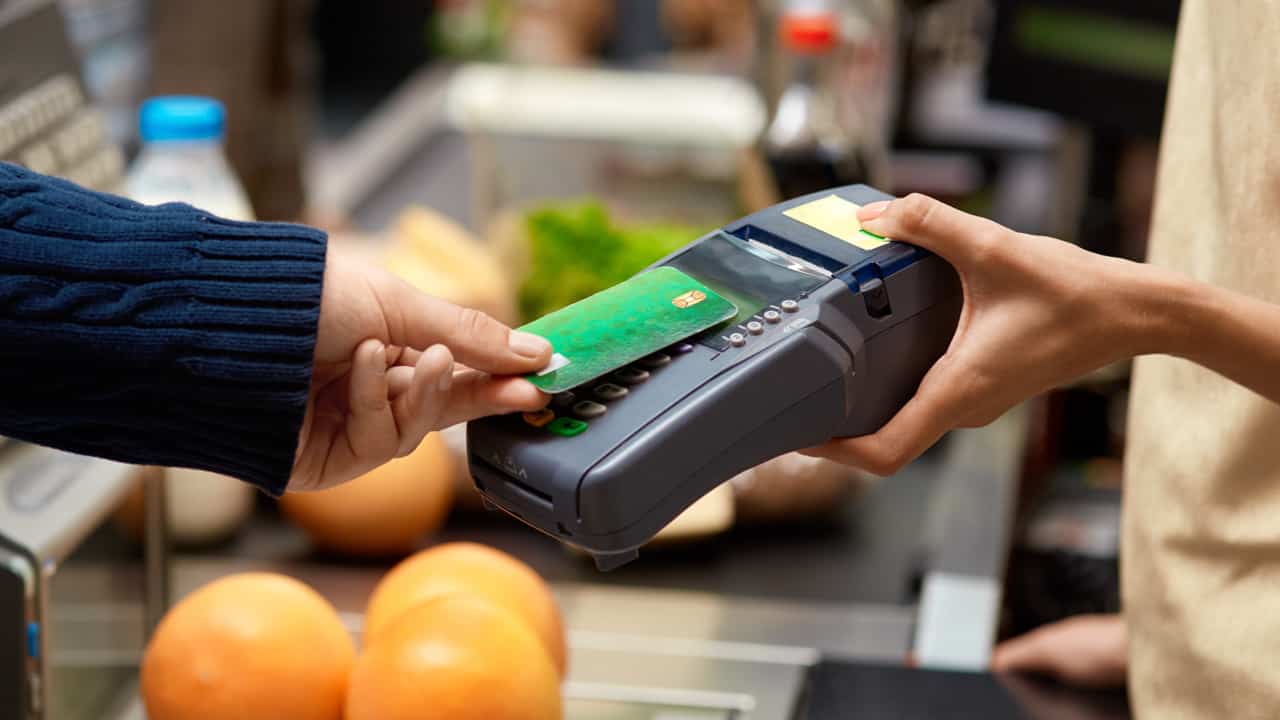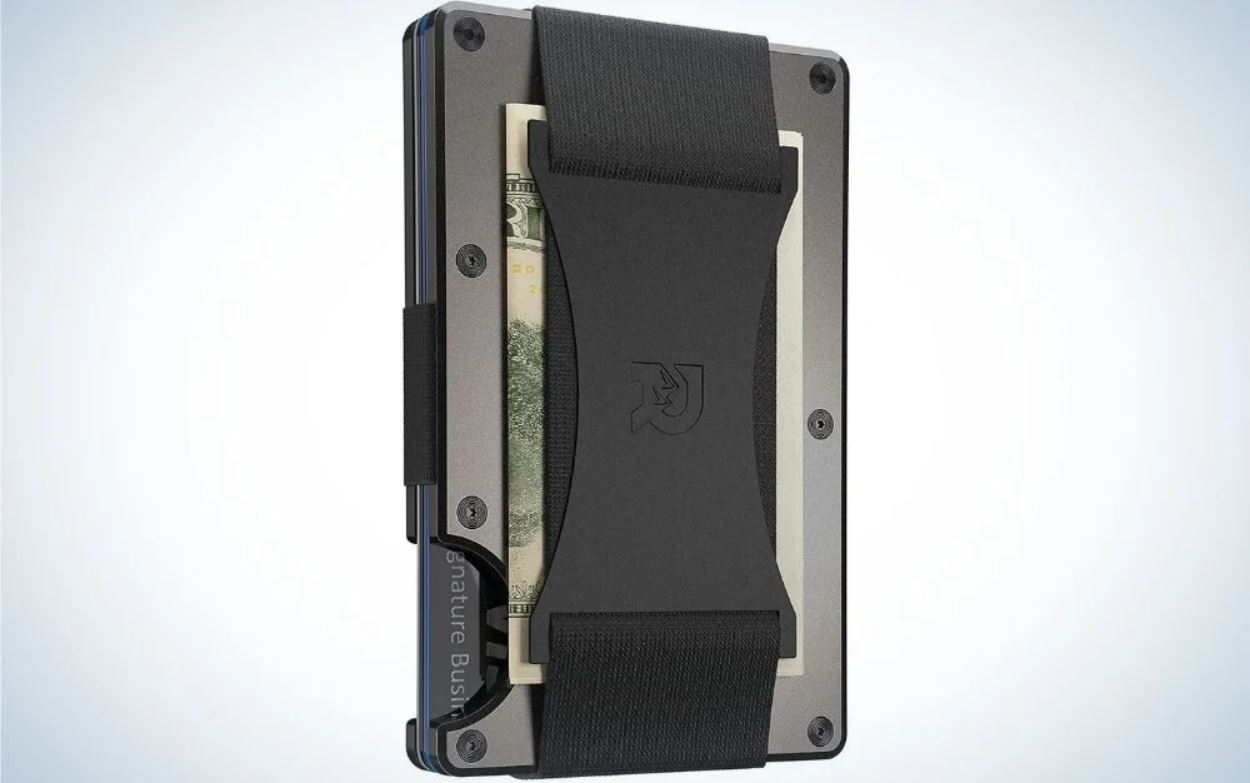Introduction
Welcome to the world of RFID technology, where convenience meets security concerns. Radio Frequency Identification (RFID) has revolutionized various industries, from retail and logistics to healthcare and transportation. This technology allows for seamless tracking and identification of items using electromagnetic fields.
However, with every advancement, there are potential risks. RFID theft has emerged as a growing concern, as individuals with malicious intent seek to exploit vulnerabilities in the system. In this article, we will explore what RFID theft is, how it works, the types of RFID theft, its impact, and most importantly, how you can protect yourself against it.
RFID theft, also known as skimming or electronic pickpocketing, involves the unauthorized access and theft of personal information stored on RFID-enabled cards or tags. These cards and tags contain microchips that transmit data wirelessly when in proximity to an RFID reader. This technology is commonly used in contactless payment cards, access badges, passports, and even some driver’s licenses.
Nowadays, many people carry multiple RFID-enabled cards in their wallets or purses, making them susceptible to potential theft. The ease of scanning these cards without physical contact has inadvertently opened the door for tech-savvy criminals to intercept and misuse the sensitive information embedded within.
RFID theft works by utilizing RFID readers or scanners that can wirelessly capture the data transmitted by RFID-enabled cards or tags. These readers can be bought online and can be easily concealed in a backpack, briefcase, or even a handheld device. When in close proximity to the victim’s RFID-enabled card, the reader intercepts and captures the encrypted data stored within.
There are different types of RFID theft that criminals can employ to steal personal information. One common method is through RFID skimming, where criminals use specialized devices to scan and steal information from unsuspecting victims. Another method is relay attacks, where criminals intercept the communication between an RFID card and a legitimate reader. They then create a clone using the stolen data and use it for unauthorized access or fraudulent activities.
The impact of RFID theft can be significant. With stolen information, criminals can engage in identity theft, make unauthorized purchases, or gain access to restricted areas. The aftermath of such incidents can be distressing, with victims facing financial loss, reputation damage, and the painstaking process of restoring their stolen identities.
Protecting yourself against RFID theft is crucial in today’s digital age. Stay tuned as we explore effective strategies and practical tips to safeguard your personal information in the face of this evolving threat.
What is RFID Theft?
RFID theft, also known as RFID skimming or electronic pickpocketing, refers to the unauthorized access and theft of personal information that is stored on RFID-enabled cards or tags. RFID technology utilizes electromagnetic fields to wirelessly transmit data between an RFID reader and an RFID-enabled card or tag.
RFID-enabled cards and tags contain microchips that store valuable information such as credit card details, access codes, passport information, and other sensitive data. These cards are commonly used in various applications, including contactless payment cards, access badges, key fobs, and public transportation cards.
The convenience of RFID technology lies in its ability to transmit data without the need for physical contact. However, this feature also presents a vulnerability that tech-savvy criminals can exploit. By using RFID readers or scanners, criminals can intercept the data transmitted by RFID-enabled cards or tags without the victim’s knowledge.
There are several techniques that criminals use to steal data through RFID theft. One method is RFID skimming, which involves using a specialized device to scan and capture the information from an RFID-enabled card. These skimming devices can be easily purchased online and can be disguised as innocent-looking objects such as wallets or card sleeves.
Another technique used in RFID theft is known as a relay attack. In a relay attack, criminals intercept the communication between an RFID card and a legitimate RFID reader. They use a handheld device to capture the card’s information, which is then transferred via a relay device to another criminal who is in close proximity to the victim. This second criminal uses the stolen information to make unauthorized purchases, gain access to restricted areas, or engage in other fraudulent activities.
The consequences of RFID theft can be severe for victims. Stolen personal information can be used to commit identity theft, leading to financial loss, damage to one’s reputation, and potential legal issues. Moreover, the process of restoring one’s stolen identity can be daunting and time-consuming.
It is important to note that not all RFID-enabled cards or tags are vulnerable to theft. Many newer cards are equipped with advanced security features such as encryption to protect the stored information. However, older or less sophisticated cards may still be susceptible to RFID theft.
Protecting oneself against RFID theft requires awareness and proactive measures. In the following sections, we will explore various strategies and tips to safeguard your personal information and mitigate the risks associated with RFID theft.
How Does RFID Theft Work?
RFID theft, also known as skimming or electronic pickpocketing, takes advantage of the vulnerabilities in RFID technology to steal personal information from RFID-enabled cards or tags. Understanding how RFID theft works is crucial in implementing effective strategies to protect against it.
RFID theft operates by exploiting the wireless communication between an RFID reader and an RFID-enabled card or tag. When an RFID-enabled card comes into proximity with an RFID reader, it transmits the stored data wirelessly through radio waves.
Criminals can use various methods and devices to intercept and capture this transmitted data. One common technique is through the use of RFID readers or scanners. These devices can be easily obtained online and can range from handheld scanners to larger, more powerful stationary readers.
RFID readers can be concealed in everyday objects such as bags, wallets, or even within a criminal’s clothing. When in close proximity to a victim’s RFID-enabled card, the reader captures the electromagnetic signals emitted by the card and extracts the encrypted data stored within it.
Once the encrypted data is obtained, criminals have several ways to exploit it for their gain. One method is to create counterfeit cards or tags containing the stolen information. These cloned cards can then be used for fraudulent transactions or unauthorized access to secure areas.
Another technique employed in RFID theft is the relay attack. In a relay attack, criminals use a two-person team. One person approaches the victim with an RFID reader while the other person waits near a legitimate RFID reader, such as those used for payment terminals or access control systems.
The person near the victim captures the data from the victim’s RFID-enabled card using the handheld reader. This data is then relayed to the second person who is in close proximity to the legitimate reader. The second person then uses the stolen data to authorize transactions or gain access to restricted areas.
It’s important to note that the success of RFID theft depends on the vulnerability of the targeted RFID-enabled card or tag. Newer cards and tags often come equipped with enhanced security measures such as encryption, making them more resistant to skimming attacks. However, older or less secure cards may still be susceptible to RFID theft.
Protecting against RFID theft requires a multi-layered approach. In the next sections, we will discuss various strategies and countermeasures that can be employed to safeguard your personal information from potential RFID theft.
Types of RFID Theft
RFID theft can take on different forms, utilizing various methods and techniques to steal personal information from RFID-enabled cards or tags. Understanding the different types of RFID theft is essential in implementing effective countermeasures to protect against these threats.
1. RFID Skimming: This is the most common form of RFID theft. Skimming involves using a specialized device, such as an RFID reader or scanner, to capture the data transmitted by an RFID-enabled card or tag. Criminals can obtain these skimming devices easily, and they can be concealed within innocuous objects like wallets or card sleeves. Once the information is captured, it can be used to create counterfeit cards or for unauthorized transactions.
2. Relay Attacks: In a relay attack, criminals intercept the communication between an RFID-enabled card and a legitimate RFID reader. The attack involves two individuals working together. One person stands close to the victim and captures the data from their RFID card using a portable reader. The captured data is then quickly transmitted to another person in close proximity to a legitimate reader, who uses the stolen information to conduct fraudulent activities or gain unauthorized access.
3. Blockers/Signal Jammers: Some thieves use blocking or jamming devices to disrupt the communication between an RFID card and a legitimate reader. These devices emit powerful radio waves that interfere with the signals, preventing the RFID card from transmitting its data to the reader. As a result, the targeted cardholder may be unaware that their information has been blocked, allowing criminals to exploit the situation for their advantage.
4. Eavesdropping: Eavesdropping involves using specialized equipment to intercept and capture the transmission of data between an RFID-enabled card and a legitimate reader. This method requires a more sophisticated setup, as the attacker needs to be in close proximity to the communication signal between the card and the reader. By capturing and analyzing the transmitted data, criminals can obtain the necessary information to carry out unauthorized activities.
5. Cryptographic Attacks: Some criminals attempt to break the encryption protocols used in RFID-enabled cards or tags. This involves exploiting vulnerabilities in the cryptographic algorithms, key management, or implementation of the security measures. By successfully decrypting the data stored on the card, attackers gain access to sensitive information, which can be used for various malicious purposes.
It’s important to note that the extent of vulnerability to different types of RFID theft can vary depending on the security features and protocols implemented in the RFID-enabled cards or tags. Advancements in technology and security measures aim to mitigate these threats and provide better protection against RFID theft.
Protecting against these types of RFID theft requires a combination of security measures, including using RFID-blocking wallets or sleeves, choosing RFID-enabled cards with robust encryption protocols, and being mindful of your surroundings to prevent potential skimming or relay attacks.
Impact of RFID Theft
RFID theft can have significant consequences for individuals and organizations alike. The impact of such theft extends beyond just financial loss and can lead to various personal and societal challenges. Understanding the potential impact helps highlight the importance of taking appropriate measures to protect against RFID theft.
1. Financial Loss: RFID theft can result in significant financial loss for victims. Criminals can use stolen information to make unauthorized purchases, withdraw funds, or engage in other fraudulent activities. Victims may only become aware of the theft when they receive their credit card or bank statements, leading to considerable financial stress and difficulty in recovering the stolen funds.
2. Identity Theft: By stealing personal information from RFID-enabled cards or tags, criminals can engage in identity theft. This involves assuming the victim’s identity to open accounts, apply for loans, or even commit crimes under the victim’s name. The impact of identity theft can be far-reaching, affecting the victim’s credit score, reputation, and overall financial well-being.
3. Reputational Damage: Victims of RFID theft may suffer reputational damage due to the actions carried out by criminals using their stolen information. The association with fraudulent activities can tarnish a person’s reputation in both personal and professional spheres. Resolving such issues can be time-consuming and challenging, negatively impacting personal relationships and employment opportunities.
4. Privacy Invasion: RFID theft is a violation of personal privacy. The theft of personal information from RFID-enabled cards or tags can expose sensitive details, such as credit card numbers, dates of birth, or social security numbers. This invasion of privacy can cause emotional distress and a loss of trust in the security measures designed to protect personal information.
5. Operational Disruption: For organizations that rely on RFID technology for access control or inventory management, RFID theft can lead to operational disruption. Unauthorized access to secure areas through stolen access badges can compromise the security of the organization. Additionally, the theft of inventory data stored on RFID-enabled tags can impact inventory management, supply chain operations, and overall business efficiency.
6. Social and Economic Impact: The prevalence of RFID theft can have broader social and economic consequences. As the incidence of theft continues to rise, individuals may become wary of using RFID-enabled cards or tags, raising concerns about the safety and security of the technology. This can lead to a decrease in consumer confidence, impacting businesses that rely on RFID technology and hindering the growth and development of related industries.
To mitigate the impact of RFID theft, proactive measures must be implemented. Protecting personal information through the use of RFID-blocking wallets or sleeves, being vigilant of surroundings, regularly monitoring financial statements, and reporting any suspicious activity promptly are crucial steps in safeguarding against RFID theft.
How to Protect Against RFID Theft
Protecting against RFID theft requires a combination of awareness, best practices, and the use of protective measures. By implementing these strategies, individuals can significantly reduce the risk of falling victim to electronic pickpocketing and unauthorized access to their personal information.
1. Use RFID-Blocking Technology: Invest in RFID-blocking wallets, sleeves, or pouches to shield your RFID-enabled cards or tags from unauthorized scanning. These accessories contain special materials that block or disrupt the radio signals used in RFID communication, effectively preventing potential thieves from intercepting your data.
2. Opt for Advanced Secure RFID Cards: When obtaining RFID-enabled cards or tags, choose ones that have advanced security features, such as encryption. Cards with enhanced security measures make it more difficult for criminals to intercept and decode the data stored on them, providing an extra layer of protection against RFID theft.
3. Keep Cards Separate: Avoid storing multiple RFID-enabled cards or tags together in the same compartment or sleeve within your wallet or purse. By keeping them separated, you reduce the risk of multiple cards being scanned simultaneously, making it harder for criminals to obtain all of your sensitive information at once.
4. Be Mindful of Your Surroundings: Stay vigilant in crowded places, particularly in areas where people are in close proximity to you, such as public transportation or busy shopping areas. Criminals often take advantage of these situations to skim or intercept your RFID-enabled cards without your knowledge. Keep an eye out for suspicious behavior, and be cautious when approached by strangers wielding electronic devices.
5. Use Additional Layers of Security: Consider using additional security measures such as two-factor authentication or PIN codes, if available, for your RFID-enabled cards or tags. By adding an extra layer of verification, you make it more challenging for thieves to gain unauthorized access to your accounts or personal information, even if they manage to steal your card’s data.
6. Regularly Monitor Transactions and Statements: Keep a close eye on your credit card, bank, and financial statements. Regularly review transactions to identify any unauthorized or suspicious activity. If you notice any discrepancies, report them immediately to your financial institution and take appropriate steps to mitigate potential damage.
7. Stay Informed: Keep yourself up to date with the latest trends, technologies, and security measures related to RFID theft. Stay informed about the vulnerabilities and risks associated with RFID-enabled cards or tags, as well as the countermeasures available to protect against them. This knowledge will help you make informed decisions and take necessary precautions to safeguard your personal information.
By following these practices and implementing the appropriate protective measures, you can significantly reduce the risk of falling victim to RFID theft. Prioritize your information security and take proactive steps to ensure your personal data remains protected.
Conclusion
In today’s increasingly digital world, RFID technology offers convenience and efficiency in various applications. However, it also presents risks, with RFID theft emerging as a growing concern. Understanding the nature of RFID theft and implementing effective protective measures is crucial to safeguard personal information and mitigate potential risks.
RFID theft, also known as skimming or electronic pickpocketing, involves the unauthorized access and theft of personal information from RFID-enabled cards or tags. Criminals use various methods such as skimming devices, relay attacks, and eavesdropping to capture and misuse this data. The consequences of RFID theft can include financial loss, identity theft, reputational damage, and invasion of privacy.
To protect against RFID theft, individuals can employ a combination of strategies. Using RFID-blocking technology, opting for advanced secure RFID cards, keeping cards separate, and being mindful of surroundings are practical steps that can be taken. Additionally, implementing additional layers of security, regularly monitoring transactions and statements, and staying informed about emerging threats and countermeasures are essential in mitigating the risks.
Ultimately, protecting against RFID theft requires a proactive approach and a commitment to information security. By implementing these protective measures and being vigilant, individuals can actively reduce the risk of falling victim to RFID theft and ensure the safety of their personal information.
Stay informed, stay vigilant, and prioritize your personal information security to combat the evolving threats of RFID theft in today’s digital age.

























